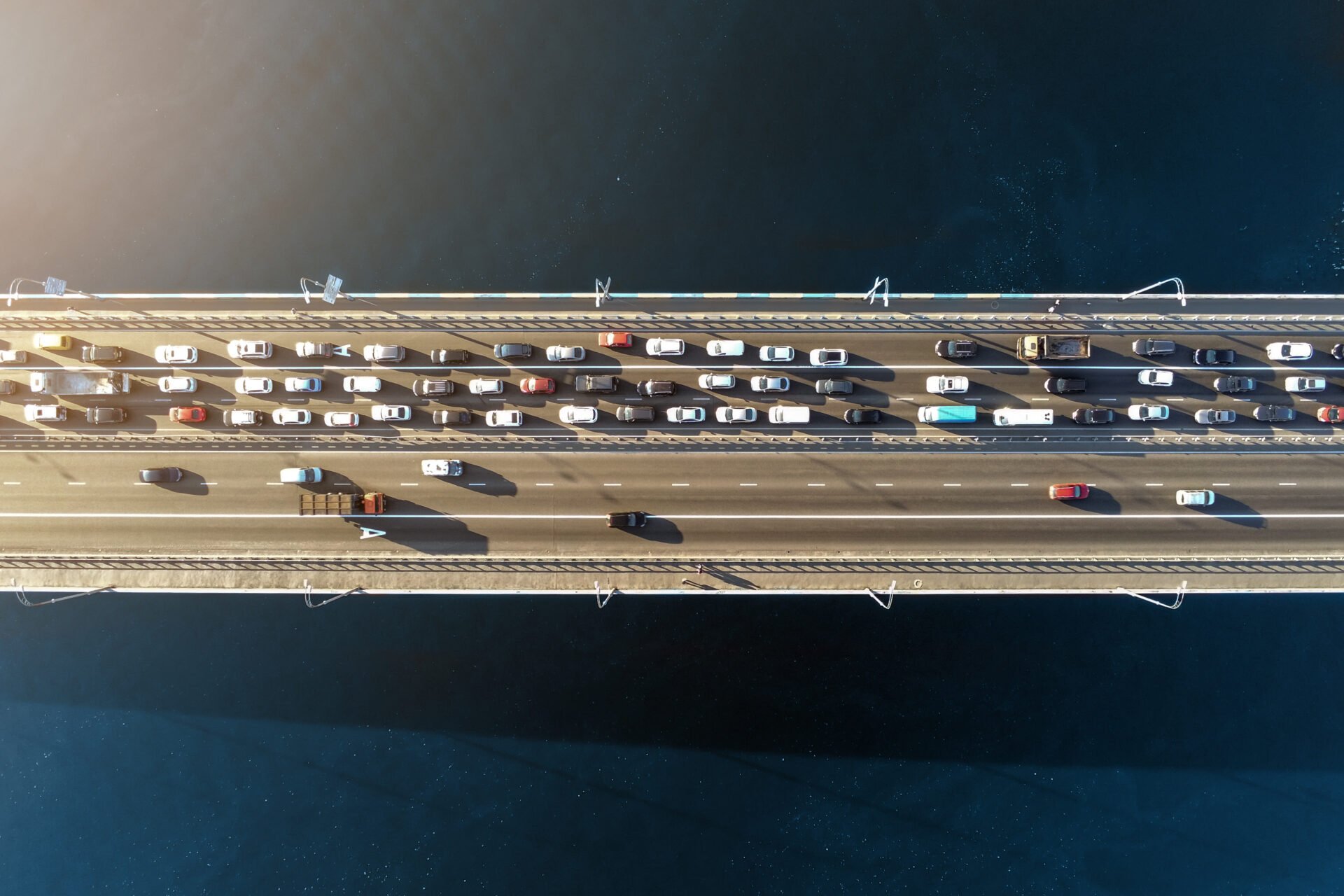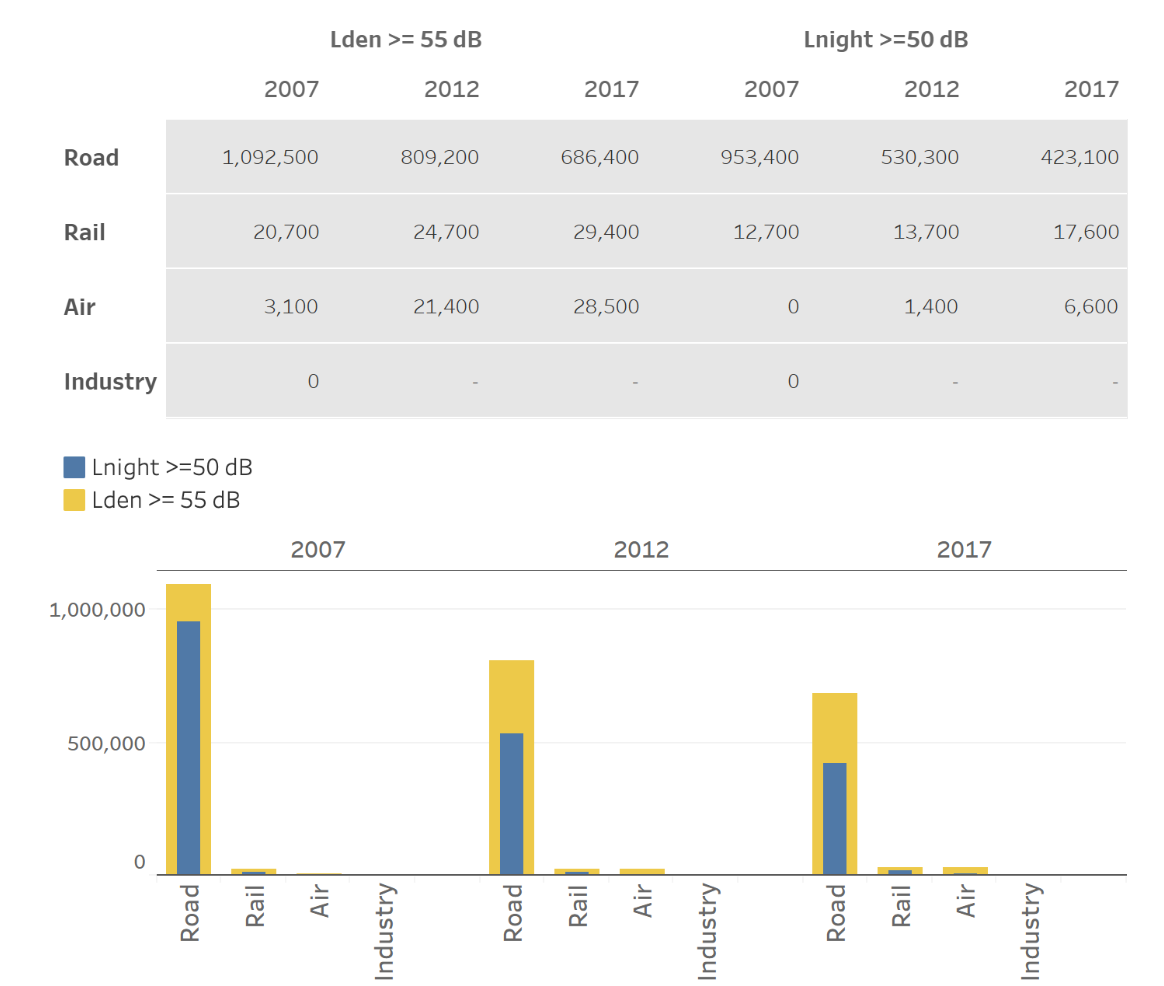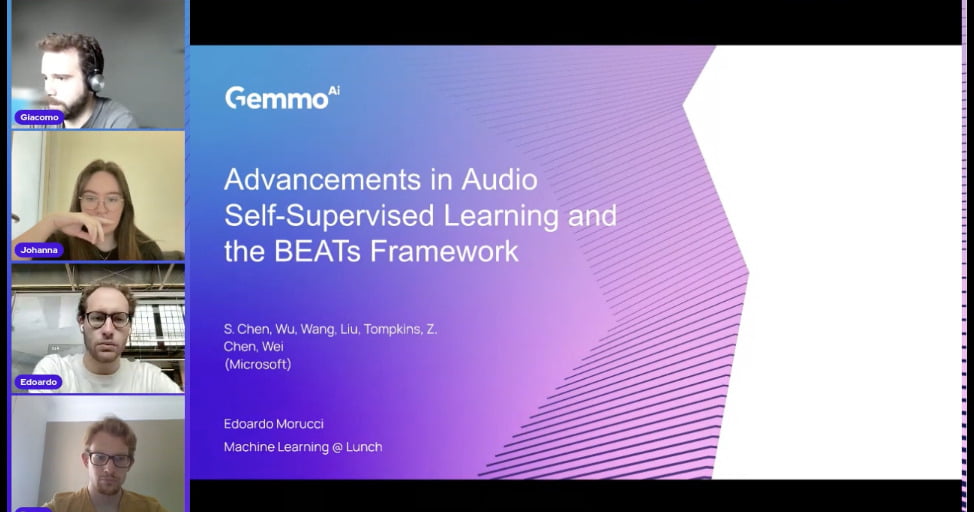The Road to Fewer Noise Complaints with AI
Noise complaints are on the rise in Ireland, with a particular concern being the escalating noise pollution from traffic. Among the various sources of noise, road traffic noise has emerged as the most complained-about is...

Noise complaints are on the rise in Ireland, with a particular concern being the escalating noise pollution from traffic. Among the various sources of noise, road traffic noise has emerged as the most complained-about issue in Ireland. It accounts for a staggering 17.9% of all reported noise disturbances.
This growing problem has prompted a pressing need for effective solutions to address the auditory intrusion and restore tranquillity to the Irish soundscape.
Below is a graph provided by the European Environment Agency detailing the number of people exposed to high noise levels in urban Ireland. As evidenced, road noise is a glaring problem, massively outweighing other noise sources like rail and air.

EEA- Ireland Noise Fact Sheet 2021
The Problem: Noise Complaints and Pollution
Noise pollution has increasingly become a pressing concern for urban communities. Consistent exposure to loud noise can disrupt sleep, increase stress levels, and hinder overall well-being. With increased noise pollution comes increased noise complaints. Noise complaints have strained relationships between residents, businesses, and local authorities.
A closer look finds that noise pollution has effects that go beyond simply discomfort. Prolonged exposure to high decibel levels has been linked in studies to more significant health problems, such as cardiovascular illnesses and hearing loss. According to the World Health Organisation, noise pollution poses an underestimated risk that can result in both immediate and long-term health issues.
Additionally, communities are not affected equally by noise pollution. Certain groups are disproportionately impacted, including those who reside in densely crowded areas and lower-income neighbourhoods. These groups frequently lack the means to address the problem, which creates an endless cycle of continuous exposure and rising health hazards.
Complainants often go unheard
Often the people behind the complaints feel as though their words have fallen on deaf ears, as high noise levels persist. It is clear that the current manual methods for noise pollution reduction are not sufficient. People are unable to handle the sheer volume of data in urban environments. Enter Gemmo AI’s Sound Analysis APIs.
What is being done about noise complaints?
In the pursuit of quietude, the government has enacted legislation to curb noise pollution, recognising its detrimental effects on human health, property, and the environment. The Environmental Protection Agency Act of 1992 defines noise as a nuisance that endangers well-being, property, and the very fabric of the environment we inhabit.
Through regulations, noise mapping, action plans and local campaigns, major leaps toward a quieter world have been achieved. For example, in 2017, the EPA designed noise maps of Dublin and Cork to evaluate and assess the level of noise exposure in our major cities.
However, traditional approaches to combating noise complaints are proving inadequate. Sound analysis work is still mainly reliant on subjective human perception. The complex nature of contemporary urban surroundings requires an examination and improvement of existing approaches.
Noise analysts undertaking this job can struggle to capture the intricacies of urban soundscapes, drowning in the deluge of decibels that envelop our cities. Effective policy-making and enforcement are hindered by this subjective approach to noise assessment, which often results in inconsistent and unreliable data.
The Solution to Noise Complaints: An API for Sound Analysis
Gemmo AI’s Sound Analysis APIs provide a revolutionary solution to combat noise pollution and alleviate the burden of noise complaints. By harnessing the power of AI, our technology offers faster and more accurate monitoring, allowing for timely interventions and proactive noise management.
Through identifying the sources and patterns of noise, stakeholders can implement targeted measures to reduce noise pollution, fostering harmony within communities. Our API has three main functions that work to analyse sound:
1. Noise Source Attribution
- Identify noise sources in short clips.
- Quickly discard irrelevant noise clips.
2. Acoustic De-Contamination
- Remove background noise (rain, wind) from large audio clips automatically.
- Identify sparse, rare sound events of interest (blasting, piling, engine spinning).
3. Acoustic Events Benchmarking
- Automatic retrieval of similar acoustic events.
- Statistical Benchmark of events properties.
Each of these functions enables better understanding, analysis, and management of acoustic environments. Understanding an environment is the crucial first step toward addressing its challenges.
With fast and accurate analysis of noise pollution hotspots like bustling motorways, we can take the necessary steps to reduce noise pollution. We have trained our API on multiple datasets specific to certain noisy landscapes.
Addressing Noise Complaints from Traffic
One of the most effective models we have built is for traffic noises. With our traffic model, we can monitor a wide range of sound types, such as:
Tyre Noise
- Our AI tool can accurately detect and classify tyre-related noises, such as tire squealing, tire screeching, or tire vibrations.
Engine Noise
- We can precisely identify and analyse different engine noises, including engine revving, vibration, and grinding.
Suspension Noise
- Uneven road surfaces, bumps, potholes, and rough terrains can cause suspension components to generate noise that needs analysis like squeaks, rattles, or clunks.
Braking Noise
- Applying the brakes can produce distinct sounds like squealing or grinding.
Sirens
- Sirens from police cars or ambulances can be analysed to understand frequency and sound level.
Background Noise
- In addition to traffic-related sounds, our AI tool can also identify and discard various forms of background noise.
- Included in this are nearby construction noises, weather sounds like wind and rain, and even human voices.
- By filtering out irrelevant noise, our tool focuses on the critical sources of concern. Therefore, more accurate analysis and management of noise pollution is enabled.
From incorporating these comprehensive sound analysis capabilities into our AI tool, we empower communities, authorities, and stakeholders to take proactive measures in mitigating noise pollution and creating harmonious living environments.
A Future of Quieter Urban Landscapes
With the integration of our Sound Analysis APIs, the future holds the promise of quieter, more harmonious urban landscapes. By empowering individuals, businesses, and authorities with advanced sound analysis capabilities, we can address noise pollution at its core.
With exceptional accuracy, the APIs are able to identify, evaluate, and classify various forms of urban noise through the use of complex algorithms and machine learning techniques. Due to this capability, noise control measures can be more successfully implemented and customised to the unique sound profiles of different urban areas.
Benefits for Businesses and Future Urban Planning
As a result, it is expected that noise complaints will decrease in frequency. In addition to helping with immediate noise reduction initiatives, the data gathered by these APIs will support long-term urban planning and development.
For example, city planners could utilise this information to identify areas of high noise. They can then put specific measures in place, such as sound barriers or traffic rerouting. These insights can help minimise the impact of noise in residential areas by guiding the design and location of buildings and public spaces.
Additionally, by using this technology, businesses will be able to lessen their acoustic footprint and better comply with noise restrictions. This is particularly relevant for sectors where noise levels are a significant problem, such as construction, transportation, and entertainment.
Final Thoughts on Tackling Noise Complaints with AI
In the battle against noise pollution, the integration of Sound Analysis APIs is a step towards a more data-driven strategy. This step represents a change in approach from reactive to proactive noise control, where potential issues are found early on and resolved before they develop into serious problems.
In the long run, this technology opens the door to more peaceful and accommodating urban settings, improving the quality of life for all who live in urban areas. Noise complaints will become more and more infrequent on the road to better sound analysis.



